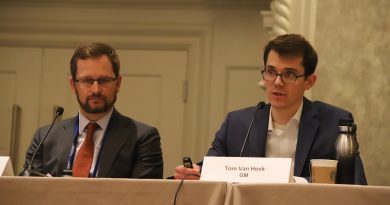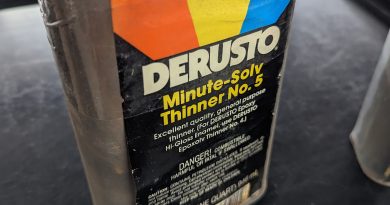Cato Needs To Re-Toole Their Bad Takes On Infrastructure
Randal O’Toole’s latest polemic from Real Clear Policy against the sins of rail is, well, frankly terrible. I’m allowed to say this because I own– and, I regret to say, have read– a couple of his books. The story of why I own them is not important but, suffice it to say, is a reason why I shouldn’t shop for books online late at night after a few beers. (I woke up a week later with these two books on my doorstep and, well, I had to read them at that point). So, let’s suggest that the Cato Institute, ah, re-Toole, their bad takes on infrastructure. Because Brother Randy is out of pocket with this latest one. Let’s take it step-by-step.
Beginning, As With All Good Vitriol, With Hating On California
O’Toole begins with the premise that the Obama Administration’s multi-billion dollar HSR push hasn’t worked, so we should eliminate spending on trains. Train speeds haven’t improved in California, he complains. I hate to break it to you, Randy, but the HSR project isn’t done yet. It’s not supposed to be done completely until 2033, by which time I, Nat M. Zorach, AICP, will be 45 years old. I even agree with Donald J. Trump on the fact that government approvals for infrastructure investment take way too long.
It is true that California’s high-speed rail project has been, in budget terms, a minor disaster. I don’t know the intimate details of the project, so I can’t speak to specifics. What I do know is that construction estimates routinely fail to take into account things like land acquisition costs. So, when they say, “hey, rail only costs $1 million per mile to build!” that may well be about true in terms of dumping the ballast on the ground and installing the rails. But then you have to run those rails through farmland, and car dealerships, or what have you. If you can’t use eminent domain, people are probably going to demand some pretty hefty prices. And even if you can, well, lawyers have to get paid, etc., and you still have to factor in other infrastructure costs (utilities, etc.).
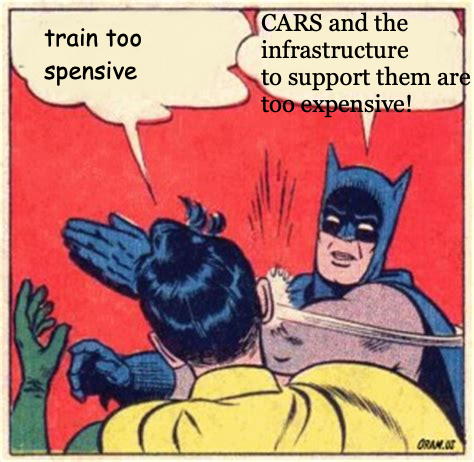
User fees? What user fees?
As to the rest of his points? Let’s have a look. Writes O’Toole:
First, the interstates were paid for entirely by highway users. In contrast, high‐speed rail fares would cover none of the construction costs and only a fraction of the costs of operating high‐speed trains.
This isn’t true. It’s not remotely true. First, when we talk about a “user fee,” we’re saying “the driver is paying to use the road.” Gas taxes are theoretically a user fee. But they only cover a portion of highway costs. And the interstates were built originally from massive public appropriations that weren’t paid for by users, unless, you know, taxpayers are the users we’re talking about. Libertarian drivel on this subject– including O’Toole’s own writing on the subject- recognizes the importance of internalizing the costs of infrastructure spending by assessing it to individual users. Hell, even Reason thinks we need to move from gas tax toward VMT (what they call, more cumbersomely, MBUF).
The problem is that O’Toole woefully misrepresents (I say “misrepresents” because he’s definitely smart enough to understand what he’s doing) where the money is coming from and where it’s going for highway spending. However you slice it, every taxpayer in the United States is liable for an average of about $700 per year for highway spending. And wait til you see the cost of car ownership!
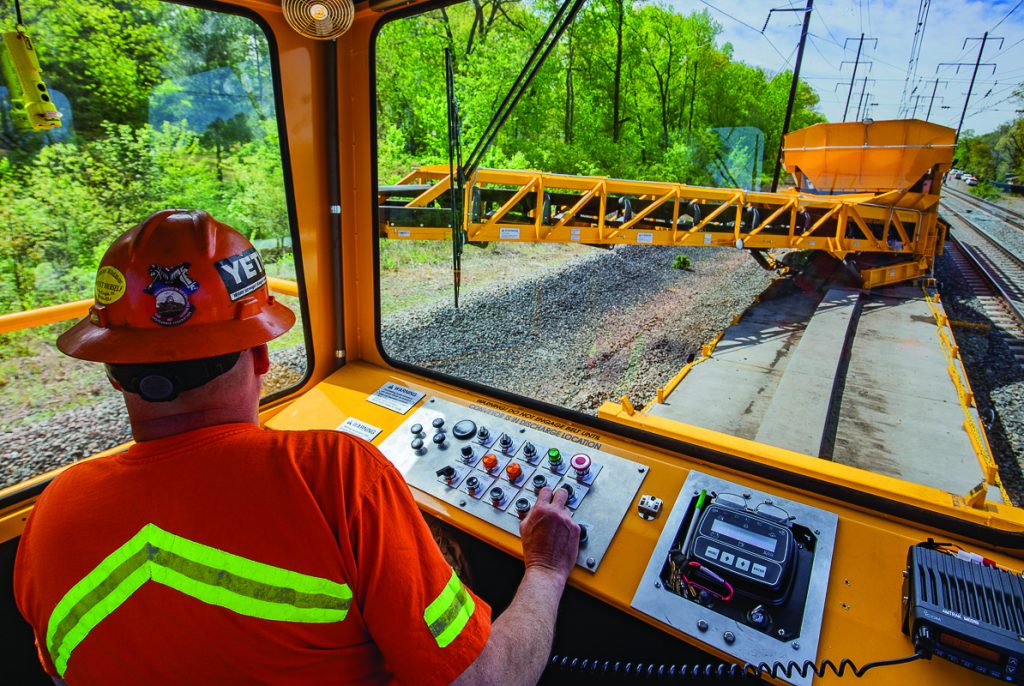
Meanwhile, in trainlandia
Amtrak more than covers its operating costs on its NEC routes, including, notably Acela. By and large, the NEC is fast, comfortable, and reliable. It gets a little bit more complicated when you face the truth that farebox recovery ratio (FRR) doesn’t refer to, say, the cost of building a new bridge. Amtrak in particular needs billions in new infrastructure investment. Including actually some that the Trump people explicitly held up! (They later reversed course, but what a dick move).
Moving on.
Second, interstates were far less expensive to build than rails. The 48,000 miles of interstates cost about $530 billion in today’s dollars, or an average of about $10 million a mile for a four‐lane freeway. California, meanwhile, spent about $100 million a mile building a high‐speed rail line on flat ground and expected to spend at least $170 million a mile through hilly territory.
What’s more? When Randy took his high school sweetheart to the malt shop in 1967, or whatever, a milkshake was a whopping 40 cents! That’s only $3.13 today, adjusted for inflation! Why aren’t milkshakes $3.13? Why are they now $7.00? Back in the good old days, when men were men, women were women, and a good cigar was a smoke! (Credit to Papa Zorach for that adage).
Randy: costs change over time. They’re not static. That’s why a tiny TV used to cost, like, thousands of dollars in today’s money, but today, in the year of our lord 2021, I can get an entry-level LCD at the Mexican grocery store down the block for all of $149.99 plus tax. For televisions specifically, this is a product of increasing efficiencies of scale in producing semiconductors, Moore’s law, yada yada yada. If I want to put on my Marxist hat, I could point out that the socially necessary labor time required to produce these cheaper things in days of yore was much lower, while, in the modern day, factories crank out bazillions of televisions with a minuscule marginal human input.
For highways, it’s honestly not quite as different in terms of labor. We still have fossil fuel-powered machines that are operated by humans, and we still build many roads by crushing up rocks and mixing them with hot oil, because why change. The biggest change, though? The average price of farmland has more than tripled, adjusted for inflation, in the past 60 years. That means that you can’t say, “well, in 1957, interstates cost–” yeah, just… no, Randy.
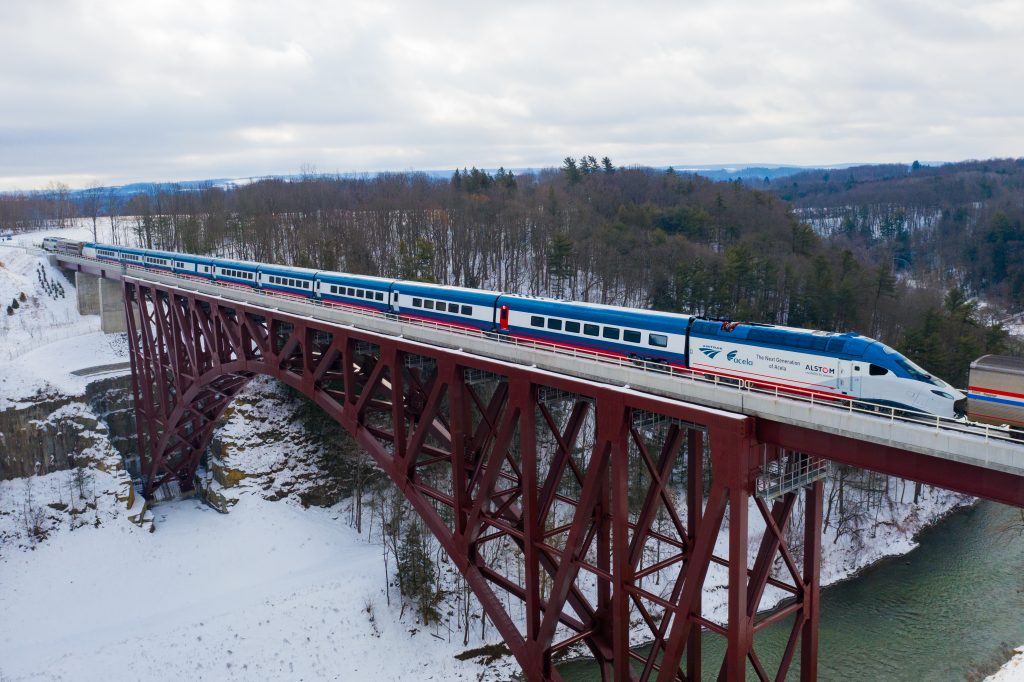
Third, the interstates connect with the nation’s other 4 million miles of roads, allowing door‐to‐door travel from just about anywhere to anywhere else in the contiguous 48 states. High‐speed rail lines won’t easily connect to other forms of travel and may not even connect with each other.
I mean, what? This is kind of like saying we shouldn’t build high-voltage transmission lines because they don’t connect to every house. Or it’s like saying that I should disconnect the gas from my house because the gas doesn’t go directly up to my bedroom on the third floor. Networks don’t work like that, Randy! Systems don’t work like that! There are different pipelines to move different things. And there are intermediate steps involved. When I go to the airport, I can’t get in my car and drive straight to the gate. I have to drive to the discount parking lot that they reserve exclusively for broke-ass journalists, then get on a little shuttle, then walk up seventeen escalators, then take the little airport train.
So, no, I don’t have a gas line on the third floor of my house. That doesn’t mean I don’t have heat. The boiler is, indeed, in the basement. To the same token, the idea of “door-to-door travel” being efficient is at odds with how badly built– and often overbuilt road infrastructure is. There is no cost argument to be made here in favor of cars.
Last point:
Finally, because the interstates provided travel that was faster, more convenient, and less expensive than before, they are enormously productive, carrying about 20 percent of all passenger travel and 20 percent of all freight ton‐miles shipped in the United States. In contrast, being slower than flying, less convenient than driving, and more expensive than both, a high‐speed rail network will carry no more than about 2 percent of passenger travel and no freight.
You can’t really work while driving a car. But you can work in a train. Or in an airport. You certainly can’t work while stopped in traffic. Congestion costs more money per year in the United States than all federal transit appropriations and rail funding combined. Like, double or triple that number, or more, depending on how you calculate it. If I were really ambitious, I could probably assemble the top-grossing transit systems in the United States and point out that congestion probably costs the economy more than their entire annual outlays put together. But that may be a story for another day.
Here, O’Toole is observing statistics without any mind toward actual economic efficiency. It’s simply a matter of “this much freight has this much share of this mode and in conclusion, the government is bad.” Also, there’s no functional reason why high-speed rail can’t include freight. The comparative efficiency of being able to move products that quickly is a big sell. There are also numerous opportunities for multimodal innovation in this space. A tilting, articulated well car with UPS overnight containers, trailing behind an Amtrak? I mean, sure, why not? This is just a discussion we haven’t had quite yet.
Externalities?! What Externalities?
Like a good libertarian, Randy doesn’t believe in externalities. If Mr. Market wanted to stop people from dumping benzene into the river, it would have done it already! The libertarian solutions for curbing traffic congestion– in the form of user fees and other incentives- are compelling. But they’re also missing the point in that libertarians generally don’t believe in mass transit as a solid alternative. Thus we lose any meaningful sight of the idea of economic efficiency after which the libertarian ostensibly quests.
Personally? I think we should increase the gas tax. I think we should also implement a VMT tax. We should use that money to fund rail, BRT, TOD, LRT, whatever alphabet soup you want. Knock yourself out. We can do a lot of things. But the best options are not just saying “trains r dumb let’s build roads.” Let’s get our head out of the automobile, for once.
Randy, we are waving at you from the new communist-funded Amtrak Acela, while your broke ass is stuck on Detroit’s privately-funded QLINE.
How’s that for gridlock, ya schmuck?
This is part of a series on mobility and transportation infrastructure. Please, USDA, hire somebody who understands what an Excel is. Handbuilt City is a subscriber-supported, never-paywalled media platform and is made possible with the likes of support from our star contributors, and readers like you.


